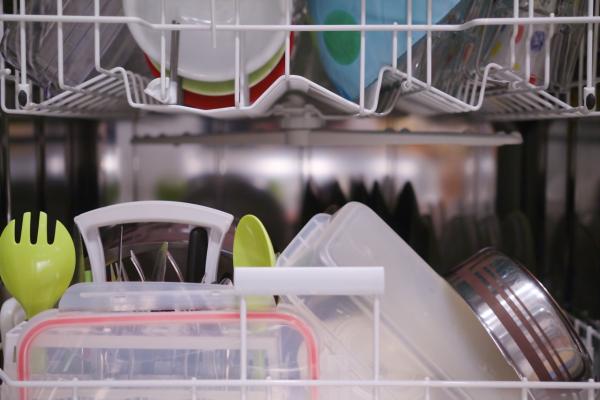Bacteria are everywhere, surviving in even the most extreme environments like hot springs and ice cubes.
So, if you think that your appliances that use hot water, like a dishwasher, are sterile - you are wrong. In fact, they are not even that clean.
What kind of bacteria are living in your dishwasher? A recent study published in Applied and Environmental Microbiology performed an analysis of microorganisms (namely fungi and bacteria) from the rubber seals from 24 different household dishwashers. The microbes were identified using next generation sequencing.
For bacteria, Pseudomonas, Escherichia and Acinetobacter were found in most samples. The most frequently encountered fungi were Candida, Cryptococcus and Rhodotorula.
Most of the organisms found are, indeed, opportunistic pathogens. So, while there is almost no chance that a person with a healthy immune system would get sick from their dishwasher, a person who is immunocompromised (with a weakened immune system) may want to take a second look at what is growing in there.
Dishwasher manufacturers are cheering
The age of the dishwasher, frequency of usage and the hardness of the incoming tap water into the dishwashers all had significant impact on bacterial and fungal composition. Not surprisingly, the overall number of years that the dishwasher had been in use was the most significant factor followed by the frequency of use (low frequency (1-3 times / week), intermediate frequency (7 times /week) and high frequency (14 times /week).
The yeast Candida was found at highest prevalence (100%) in all dishwashers.
The bacteria and fungi were found in biofilms on the rubber seals. Biofilms are communities of microbes that attach to a surface (the ring of the dishwasher, in this case) and act as an anchor for more bacteria and fungi to attach onto them, building a multicellular bacterial community that, once established, is incredibly difficult to get rid of.
It's very cool how well bacteria adapt
But, this is not a story about scaring people about their dirty dishwasher. It is, instead, to point out how cool it is that bacteria can grow anywhere. Dishwashers are extreme environments with hot and cold cycles, wet and dry, acidic and basic, and even scraps of food and drink. Never mind that, but, they are frequently full of soap. And, there are bacteria and fungus that survive and grow in there. To this microbiologist, that is super cool.
That said, if you are noticing a smell from your dishwasher, or can see visible slime on the rubber areas, it might not be a bad idea to clean it periodically. Some suggest running it with a cup of white vinegar and/or baking soda, to try to sanitize it or freshen it up. Because even if biofilms of bacteria and fungi living where you clean your dishes is not going to harm you, it is kind of gross.
Source: Prem Krishnan Raghupathi. Microbiomes in Dishwashers: Analysis of the microbial diversity and putative opportunistic pathogens in dishwasher biofilm communities Appl. Environ. Microbiol. doi:10.1128/AEM.02755-17




